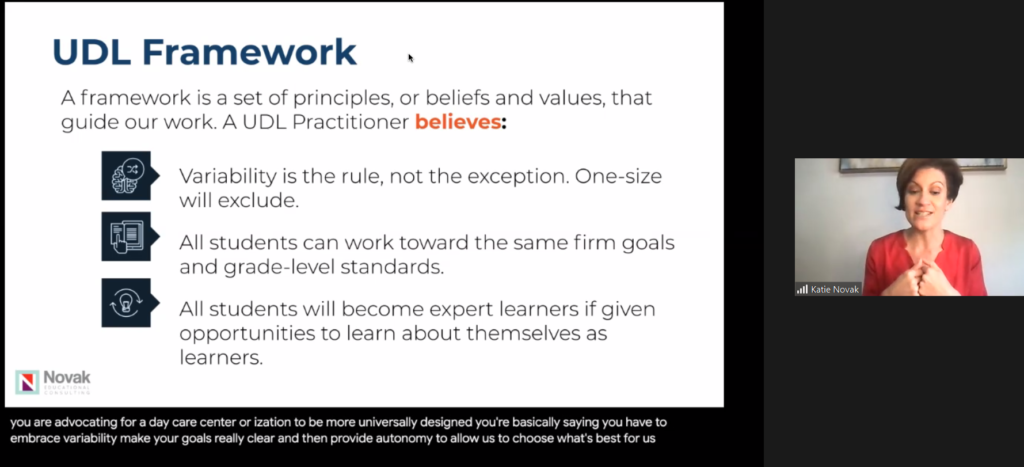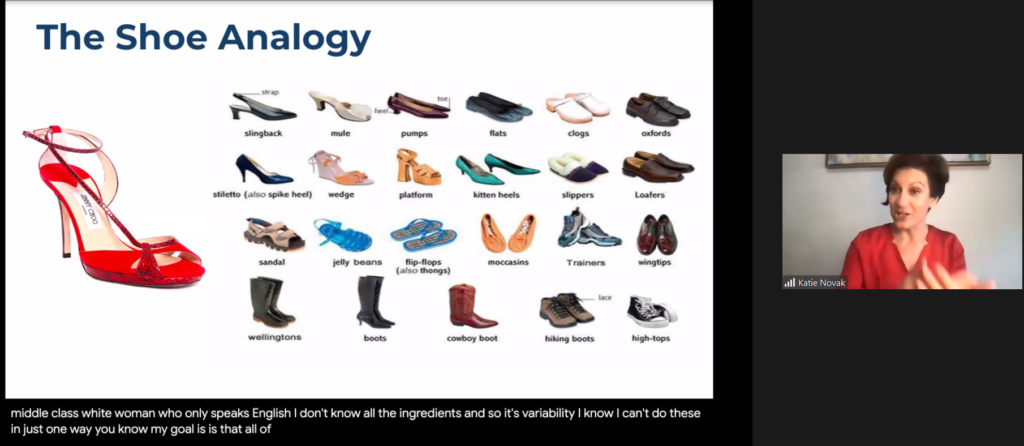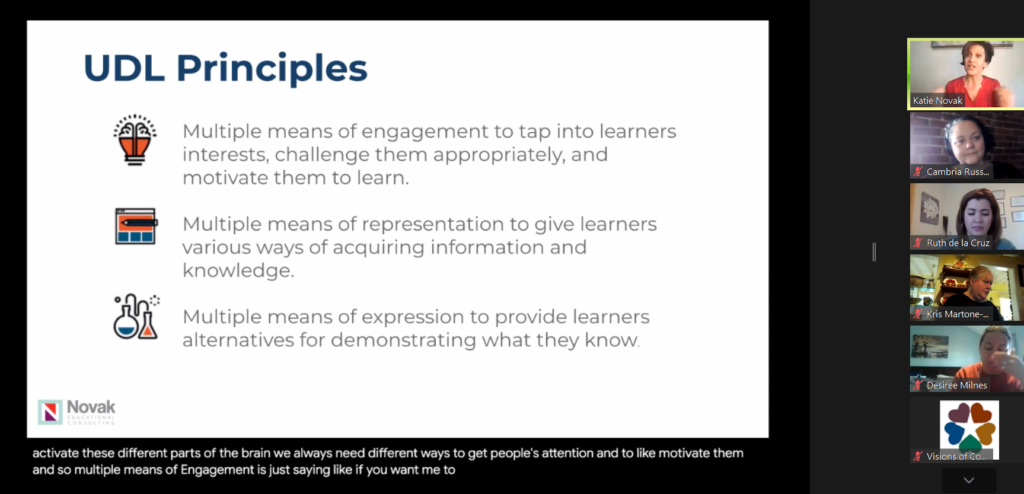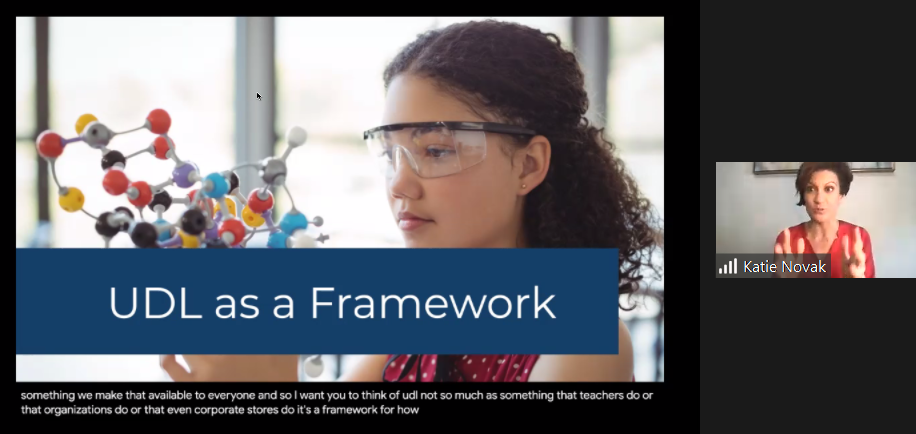MASFEC is pleased to unveil a new resource on family engagement, developed in partnership with Katie Novak, internationally recognized educational consultant and author of Let Them Thrive. Universal Design for Family Engagement applies the principles of Universal Design for Learning to the work of building partnerships between schools, families, and community.
But, what is Universal Design for Learning (UDL)?
On Thursday, March 4, Novak offered a workshop aimed at helping participants understand and explain the principles of UDL. In summary, as shown in the screen capture below, this framework is based on the belief that:
- Variability is the rule, not the exception. “One-size” solutions will always exclude some people who don’t fit that size.
- All students can work toward the same firm goals and grade-level standards.
- All students will become expert learners if given opportunities to learn about themselves as learners.

One analogy for understanding UDL is Novak’s “Shoe Analogy.” If someone decided that everyone needs to wear red high-heeled shoes, many people would be completely unable to function. High heels won’t work if a person needs to run or walk long distances, and many people can’t wear them without pain and need a more comfortable choice in order to be able to focus on what they’re doing. High heels work great for certain situations, and even make some people very happy — but our variability means that everyone needs to be able to find the shoes that will work for them.

Applying UDL Principles to Family Engagement
Key principles of UDL, shown in the slide below, can be applied to the learning of children and teens, to adult learners, and to building partnerships between the adults invested in children’s learning (families, school, healthcare providers, community resource people). These key principles include:
- Offering multiple means of engagement to tap into learners’ interests, challenge them appropriately, and motivate them to learn.
- Providing multiple means of representation to give learners various ways of acquiring information and knowledge.
- Allowing multiple means of expression to provide learners alternatives for demonstrating what they know.

Some examples of what it looks like when these principles and concepts are applied to Family Engagement:
- Schools and organizations offer options of language translation and disability accommodation so that diverse families can understand the information.
- Choices and preferences for how families would prefer to communicate are requested and respected. Phone calls, text messaging, email, in-person and virtual communication work best for different families.
- The diverse ways that families engage and support their children’s learning are respected and welcomed so that families can choose to support learning in the way that works best for them.
- Partnerships involve two-way communication where families are asked for their perspectives, and are treated as experts on their culture, community, and children. This feedback helps schools and organizations improve and offer new choices and options for engagement.
- Relationship-building with families takes place in a variety of places, not just at the school.
- For activities taking place in a location such as the school, practical needs such as childcare, transportation and food are taken care of so that all families have access and feel welcomed and included.
View the Universally Designed Family Engagement Booklet >
Articles & Resources From Katie Novak:
- When Parent Relationships Go South – AASA, December 2018
- CEOMom Book Club: Let Them Thrive – CEO MOM Magazine, July 2018
- Raise Your Expectations of Your Child – Boston Parents Paper, April 2018
- “Which of the 8 Kinds of Intelligence Does Your Child Have?” – Motherly & Huffington Post, March, 2018
- The UDL Flowchart breaks down all the options and choices that students have to learn and share what they know in universally designed classrooms. You can access in English or Spanish.








